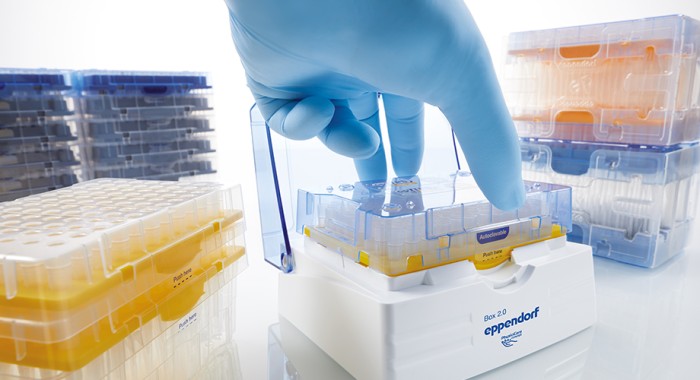MENU
BE | EUR
-
-
-
-
- Forum Labo 2025
- Advanced Therapies Week (ATW) 2025
- SLAS Europe 2025
- Bioprocessing Summit Europe 2025
- Medlab Middle East 2025
- SLAS International 2025
- Biologics World Nordics 2025
- ASIA LABEX: The Lab Show 2025
- BioProcess International Europe 2025
- ISEV 2025
- Future Labs Live 2025
- DataHow Symposium 2025
- Cell 2025
- LabDays 2025
- ASIA LABEX: The Lab Show 2025
- Stem Cell Community Day 2025
- Nordic Life Science Days 2025
-
-
-
-
- Forum Labo 2025
- Advanced Therapies Week (ATW) 2025
- SLAS Europe 2025
- Bioprocessing Summit Europe 2025
- Medlab Middle East 2025
- SLAS International 2025
- Biologics World Nordics 2025
- ASIA LABEX: The Lab Show 2025
- BioProcess International Europe 2025
- ISEV 2025
- Future Labs Live 2025
- DataHow Symposium 2025
- Cell 2025
- LabDays 2025
- ASIA LABEX: The Lab Show 2025
- Stem Cell Community Day 2025
- Nordic Life Science Days 2025
BE | EUR
-
- Benchtop Centrifuges
- Floor-Standing Centrifuges
- Refrigerated Centrifuges
- Microcentrifuges
- Multipurpose Centrifuges
- High-Speed Centrifuges
- Ultracentrifuges
- Concentrator
- IVD Products
- High-Speed and Ultracentrifuge Consumables
- Centrifuge Tubes
- Centrifuge Plates
- Device Management Software
- Sample and Information Management
-
- All Pipettes, Dispensers & Automated Liquid Handlers
- Mechanical Pipettes
- Electronic Pipettes
- Multi-Channel Pipettes
- Positive Displacement Pipettes & Dispensers
- Automated Pipetting
- Bottle-Top Dispensers
- Pipette Controllers
- Pipette Tips
- Automation Consumables
- Dispenser & Pipette Accessories
- Automation Accessories
- Dispenser & Pipette Services
Sorry, we couldn't find anything on our website containing your search term.

Save Plastic, Stay Safe
JAN-HENDRIK BEBERMEIER Lab Academy
- Molecular Biology
- Microbiology
- Safety & Biosafety
- Pipette Tips
- BioNews article
Despite the quest for sustainability, the safety of both the scientist and the samples remains paramount in the laboratory. Although there are good initial ideas, lab waste can still not be recycled efficiently at this time because, for example, regulatory requirements stipulate that it be disposed of as biohazardous waste. How can one at least reduce this type of waste?
This article appeared first in BioNews, Eppendorf’s customer magazine since 1993.
Read more
Read less
In many laboratories, there is no way around disposable tips and tubes, which creates large amounts of biologically or chemically contaminated plastic waste. Innovative recycling concepts are still a long time coming; however, through clever product selection, you can start reducing the amount of plastic used in the laboratory today.
Specific examples
A final suggestion
Any object that comes into contact with the bench surface in the laboratory is to be considered contaminated. This risk of contamination also jeopardizes the recycling of packaging material. For this reason, products such as tip boxes should be separated from the packaging material in such a way that they remain “clean”. After all, cardboard, plastic lids or bags are valuable raw materials. Collect them in the appropriate collection bins at your organization.
Specific examples
- Reload pipette tips: for the past two decades, our epT.I.P.S.® refill system consisting of box and reloads has already been available as a plastic-saving refill system. More about our all-round optimized epT.I.P.S. Box 2.0 at www.eppendorf.com/epTIPS-News
- In many cases, a vessel with a smaller volume is sufficient! Changing from 15 mL to 5 mL or from 50 mL to 25 mL reduces plastic waste by half and doubles the storage capacity in the ULT freezer. More information at www.eppendorf.com/5mL and www.eppendorf.com/25mL
A final suggestion
Any object that comes into contact with the bench surface in the laboratory is to be considered contaminated. This risk of contamination also jeopardizes the recycling of packaging material. For this reason, products such as tip boxes should be separated from the packaging material in such a way that they remain “clean”. After all, cardboard, plastic lids or bags are valuable raw materials. Collect them in the appropriate collection bins at your organization.
Read more
Read less
